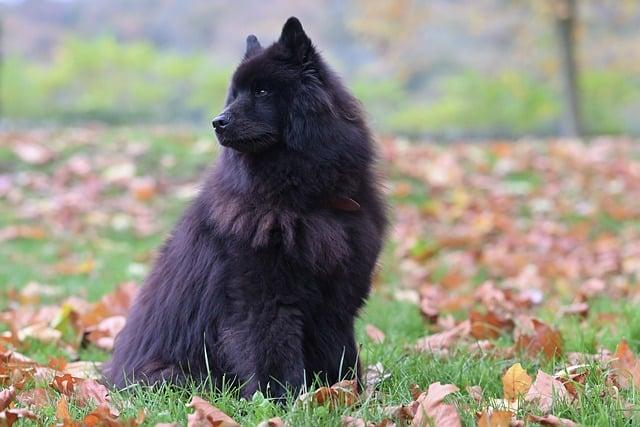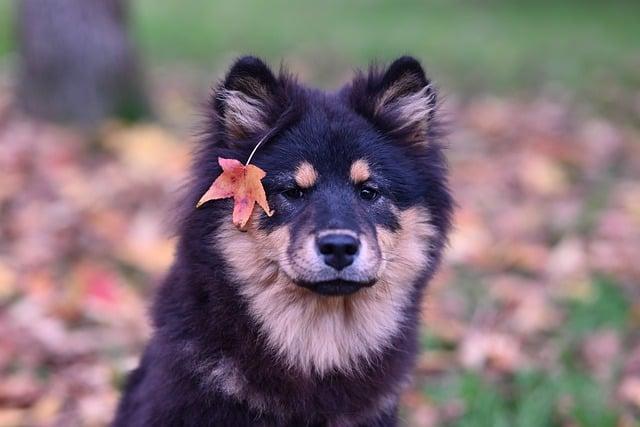In a cozy living room, a golden retriever named Max stood before a pile of toys, his tail wagging with excitement. As he sniffed each one, memories flooded back: the squeaky bone that once accompanied him on a sunny park day, the plush rabbit that comforted him during thunderstorms. Dogs, like Max, choose their favorite toys based on emotional connections, scents, and textures. This bond not only brings joy but also enhances their well-being. Understanding this can help us provide our furry friends with toys that truly resonate with their hearts.
Contents
- Understanding the Psychological Factors Behind a Dogs Toy Preference
- The Role of Texture, Color, and Sound in Toy Selection
- Observing Your Dogs Play Behavior for Better Toy Choices
- Enhancing Your Dogs Playtime Experience with Tailored Toy Recommendations
- Q&A
Understanding the Psychological Factors Behind a Dogs Toy Preference
When it comes to a dog’s toy preference, several psychological factors come into play that can significantly influence their choices. One of the primary factors is **instinctual behavior**. Dogs, being descendants of wolves, have retained certain predatory instincts that can manifest in their toy selection. For instance, a toy that resembles prey, such as a squeaky toy or a plush animal, may trigger their hunting instincts, making it more appealing. This connection to their ancestral roots can explain why some dogs gravitate towards specific types of toys that mimic the thrill of the chase.
Another crucial element is **social interaction**. Dogs are inherently social animals, and their preferences can be shaped by the interactions they have with their owners and other pets. Toys that facilitate playtime with humans or other dogs often become favorites. For example, a tug-of-war toy or a ball that encourages fetch can enhance bonding experiences, leading to a stronger attachment. The emotional rewards associated with these interactions can make certain toys more desirable, as they become symbols of fun and companionship.
Additionally, **sensory stimulation** plays a vital role in a dog’s toy preference. Dogs experience the world primarily through their senses, particularly smell and touch. Toys that offer varied textures, sounds, or scents can capture their attention more effectively. For instance, a rubber toy that squeaks or a rope toy with different fabric types can provide the sensory feedback that dogs crave. This stimulation not only keeps them engaged but also satisfies their natural curiosity, making these toys more likely to become favorites.
Lastly, **individual personality traits** significantly influence a dog’s toy choices. Just like humans, dogs have unique personalities that can dictate their preferences. Some dogs may prefer soft, cuddly toys for comfort, while others might lean towards durable chew toys for their need to gnaw and explore. Understanding a dog’s individual temperament can help owners select toys that align with their pet’s personality, ensuring that the chosen toys resonate with their specific likes and dislikes. By recognizing these psychological factors, pet owners can better cater to their dogs’ needs, ultimately enhancing their playtime experience.
The Role of Texture, Color, and Sound in Toy Selection
When it comes to selecting toys that resonate with our canine companions, the interplay of texture, color, and sound plays a pivotal role. Dogs, with their acute sense of touch, are often drawn to toys that offer a variety of textures. **Soft, plush materials** can provide comfort, while **rubber or rope toys** can satisfy their instinctual need to chew. The tactile experience not only engages their senses but also contributes to their overall enjoyment and satisfaction. A toy that feels good in their mouth is more likely to become a favorite.
Color is another significant factor that influences a dog’s toy preference. While dogs are dichromatic and see fewer colors than humans, they are particularly attracted to certain shades. **Bright colors** such as blue and yellow tend to stand out in their vision, making them more appealing. Additionally, toys that incorporate contrasting colors can capture a dog’s attention more effectively. By choosing toys that are visually stimulating, owners can enhance the likelihood of their pets forming a bond with specific playthings.
Sound is an essential element that can elevate a toy from ordinary to extraordinary in a dog’s eyes. Many dogs are instinctively drawn to toys that squeak or crinkle, as these sounds mimic the noises of prey in the wild. **Interactive toys** that produce sounds can stimulate a dog’s curiosity and encourage prolonged playtime. The auditory feedback not only keeps them engaged but also adds an element of excitement to their play sessions, making these toys more likely to become cherished favorites.
understanding the significance of texture, color, and sound can greatly enhance the toy selection process for dogs. By choosing toys that cater to their sensory preferences, owners can foster a deeper connection between their pets and their playthings. Investing time in selecting the right toys not only enriches a dog’s play experience but also contributes to their overall happiness and well-being.
Observing Your Dogs Play Behavior for Better Toy Choices
Understanding your dog’s play behavior is crucial in selecting the right toys that will keep them engaged and happy. Dogs, much like humans, have unique preferences and play styles that can influence their choice of toys. By observing how your dog interacts with different toys, you can gain valuable insights into what captures their interest the most. Pay attention to the types of play they enjoy, whether it’s tugging, fetching, or chewing, as this will guide you in making informed decisions.
When you watch your dog at play, take note of their body language and enthusiasm. A toy that elicits excitement and joy is likely to become a favorite. Look for signs such as:
- Tail wagging: A wagging tail often indicates happiness and engagement.
- Vocalizations: Barking or growling can show excitement, especially during interactive play.
- Play bowing: This behavior indicates that your dog is ready to play and is inviting you to join.
Additionally, consider the materials and textures of the toys. Some dogs prefer soft, plush toys they can cuddle with, while others may gravitate towards durable rubber or squeaky toys that stimulate their natural instincts. Experimenting with various textures can help you determine what your dog enjoys the most. Observe how they react to different toys during playtime; a toy that withstands their chewing and tugging may become a long-term favorite.
Lastly, remember that dogs can have seasonal preferences or change their toy favorites over time. Regularly rotating their toys can keep their playtime fresh and exciting. Introduce new toys gradually and observe how your dog responds. By staying attuned to their play behavior and preferences, you can create a stimulating environment that fosters joy and keeps your furry friend entertained for hours on end.
Enhancing Your Dogs Playtime Experience with Tailored Toy Recommendations
When it comes to enriching your dog’s playtime, selecting the right toys can make all the difference. Dogs, much like humans, have unique preferences that can be influenced by their breed, age, and personality. By understanding these factors, you can tailor your toy recommendations to ensure that playtime is not only enjoyable but also stimulating for your furry friend.
**Consider the breed and size** of your dog when choosing toys. Larger breeds may require sturdier toys that can withstand their strength, while smaller breeds might prefer toys that are easier for them to handle. Additionally, certain breeds have specific play styles; for instance, retrievers often enjoy fetching toys, while terriers may prefer toys that they can chew and tug. By aligning the toy’s characteristics with your dog’s natural instincts, you can enhance their engagement and satisfaction during playtime.
**Age is another crucial factor** to consider. Puppies are often teething and may benefit from softer toys that soothe their gums, while older dogs might appreciate toys that challenge their cognitive skills. Interactive toys, such as puzzle feeders, can keep senior dogs mentally stimulated and prevent boredom. Tailoring your toy selection to your dog’s life stage ensures that they receive the appropriate stimulation and enjoyment, fostering a deeper bond between you and your pet.
**observe your dog’s behavior** to identify their preferences. Pay attention to which toys they gravitate towards and how they interact with them. Some dogs may prefer squeaky toys, while others might enjoy plush toys or balls. By taking note of their reactions, you can refine your toy choices over time, ensuring that playtime remains a highlight of their day. Remember, the right toys not only provide entertainment but also contribute to your dog’s overall well-being and happiness.
Q&A
- What factors influence a dog’s choice of favorite toy?
Dogs often choose their favorite toys based on factors such as texture, size, and sound. They are naturally drawn to toys that are easy to carry and manipulate. Additionally, toys that squeak or make noise can capture their attention and stimulate their play instincts.
- Do dogs have emotional attachments to their favorite toys?
Yes, dogs can form emotional bonds with their favorite toys. These toys often provide comfort and security, especially during stressful situations. A beloved toy can become a source of joy and companionship, reflecting the dog’s personality and preferences.
- Can a dog’s favorite toy change over time?
Absolutely! A dog’s favorite toy can change due to various reasons such as age, new experiences, or changes in their environment. As dogs grow and their interests evolve, they may gravitate towards different toys that better suit their current needs and play styles.
- How can I encourage my dog to play with their favorite toy?
To encourage your dog to engage with their favorite toy, incorporate it into playtime regularly. Use positive reinforcement, such as treats or praise, when they interact with the toy. Additionally, consider rotating toys to keep their interest piqued and make playtime more exciting.
understanding how dogs choose their favorite toys can deepen our bond with them. By observing their preferences and behaviors, we can enhance their playtime experience, ensuring they feel loved and engaged. Choose wisely, and watch their joy unfold!

大家好,我是彼得潘,專業的手法身體治療師。我喜歡探索和研究各種主題,並透過與人工智慧的合作分享專業、實用、有趣的文章。我們定期進行人工審核,以確保內容的準確性。如果您發現文章中有任何不準確的地方,請隨時與我們聯繫,我們會及時糾正。您可以透過 [email protected] 與我們聯繫。



